The MGA With An Attitude
A CORE PLUG IS NOT A FREEZE PLUG - CO-105
CO-105 discusses the purpose of a core plug, how it works, and why it is not a freeze plug. The correspondent's name has been omitted to protect the innocent.
>"While running the engine, the freeze out plug in the rear of the engine dislodged and all the antifreeze came out."
First of all, this little part is a "core plug" not a "freeze plug". Anyone who thinks it might ever function as a freeze plug may one day be sadly disappointed, about the same time they are confronted with a large expense for replacing a broken engine block.
Under a certain (and rather unlikely) set of circumstances, the core plug might be dislodged by freezing coolant without otherwise damaging the engine. If the coolant in the engine does not have enough antifreeze for the cold temperature encountered, it can of course freeze. In the process of freezing, the water and ice expand a little. As heat is removed from the fluid part of the fluid freezes while some of it remains liquid at the same temperature. As more heat is removed more of the liquid turns solid, until it may all eventually be frozen. During the time when it is partly frozen and still partly liquid it can flow like a slushy snow cone, effectively acting like hydraulic fluid. And if a core plug was not particularly tight in the engine block, the plug might pop out and relieve the pressure, thereby preventing the engine block from bursting. Do you feel lucky?
If the ambient temperature persists long enough below the freezing point of the fluid, then the fluid will eventually freeze completely solid. As the coolant approaches being completely solid it will not flow very well, and the continued expansion may burst the engine block even after a core plug may have blown out. The only thing to prevent that from happening is if the ambient temperature rises above the freezing temperature of the fluid before it is all frozen solid. I don't feel that lucky. The core plugs may also hold firmly in place and never blow out while the expansion of the freezing fluid breaks the engine block.
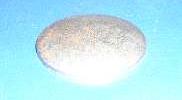

So this is not the original purpose of the core plug. These plugs are simply used to close off a hole in the casting which was formed by a supporting arm of the sand "core" which was used to form the hollow cavities inside the engine block while molten iron was being poured into the sand mold. Thus the proper term "core plug".
>"The mechanic was very surprised this happened, because after he puts in a freeze out plug he hits it with a ball peen hammer while it's in place to supposedly stretch it to stay in better."
This takes a little finesse, and some understanding of how the plug works. The core plug is slightly domed, like a small section of a sphere. If you were to smash it completely flat it would expand quite a lot on the diameter. In practice it is not necessary to go completely flat, but it does need more than a little ball peen dimple in the center. I use a wrench socket about 3/4" OD on the end of a 1/2" drive extension and give it a few reasonable (not so hard as to break the engine block) raps with a 2 pound hammer. This makes a flat spot in the middle of the plug and decreases the height of the dome by about half. That expands the OD of the plug enough to be a very tight jam fit in the block, and in most cases it will not leak, even using no sealant. I have never had one blow out or leak (knock on wood).

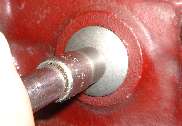
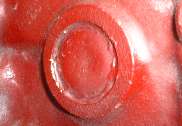
Just as a matter of slight superstition, in recent years I have taken to putting a little blue stuff (silicone gasket sealer) in the counterbore before installing the plug, just in case some prior corrosion may have left a pit mark in the block casting. Then I wipe off any sealant after installation, so you don't see any sealant on the outside when it's finished. Then paint over the whole thing.
A core plug is very effective at closing a hole when properly installed. In fact it may be so effective that it will not serve as "freeze plug", and freezing of the coolant may break the engine block without ever blowing out a core plug. If a core plug pops out from normal water pressure in the engine, the mechanic who installed it may be surprised, and deserves to be embarrassed, but doesn't have a leg to stand on when it comes to making excuses. It's not that hard to do it right, as there is a large tolerance range for the amount of compression of the dome needed for a reliable installation. It's just that a small ding in the center with a ball hammer doesn't do much more than make a visible dimple.
In fact, If you use a small diameter punch and continue to tap on it, the core plug will eventually push over center and begin to contract again, which is a very easy way to shrink and remove the plug. For as long as the link may last, there is a nice video showing how to install and remove a core plug. Just ignore the fact that the presenter is calling it a freeze plug or frost plug or expansion plug, as it is none of the above. Please always refer to this as a core plug, or by its trade name Welsh Plug. Also notice that he is using a wide flat face punch, not a ball peen hammer, but he does use a small diameter punch to remove the plug.
https://www.youtube.com/watch?v=rjmVdUmKuBg
To be effective, a spot about 1/3 to 1/2 of the diameter of the plug (near the center of the plug) needs to be depressed about 1/2 of the height of the crown. This will expand the plug considerably in diameter, enough to be a very tight fit in the machined hole in the casting. If you were to start in the center with a small diameter punch, smack it mildly with a heavy hammer, then use a few progressively larger diameter punches in succession, you could effectively force the plug to a nearly flat condition. That would force the perimeter of the plug very hard outward against the casting, but I have never known this to break the casting. This is because the casting is relatively thick and strong, and the plug is thin enough that the edge of the plug can be deformed inward as necessary to accommodate any amount of excess expansion of the diameter. This is why virtually anyone can successfully install a core plug properly. If you're not sure about it being tight enough, just give it another gentle whack or two with the large diameter punch and a heavy hammer. It isn't rocket science.
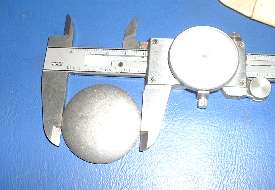
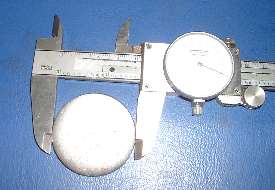
As a demonstration I have here a new core plug measuring 1.620-inch diameter. After bumping the center down a bit more than half of the crown height the OD measures 1.660-inch diameter. This shows how much these things can expand when being flattened. The hole to be plugged is nominally l.625-inch diameter, so the plug has plenty of excess capacity for expansion when properly installed.
For more detailed installation information from the inventor and major manufacturer of the Welch plug, see here: http://www.hubbardspring.com/product/expansion-plugs-steel/#tab-installation-recommendations
|